The following herbal blends are used for making teas:
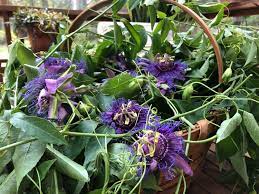
- Herba Passiflorae – Herba Passiflorae is applied for the cure of dysmenorrhoea, neuralgia, and nervous tachycardia. It is a slight sedative for nervous restlessness, insomnia, and anxiety. Experimental pharmacology includes analgesic, antipyretic, anti-inflammatory, antimicrobial, cardiovascular, central nervous system depressant, and uterine stimulant effects. Clinical Pharmacology includes anxiolytic, analgesic, and sedative effects, as well as its effect on nausea, menopause, dysmenorrhea, and diabetes.
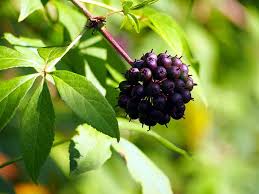
2. Eleuthero Root – In Traditional Chinese Medicine (TCM) eleuthero root is used to invigorate qi (chi or energy), strengthen and nourish the spleen and kidney and to balance vital energy. Eleuthero has been used in China to support general health. Additionally, it has been employed when there is sleeplessness with too many dreams. It is considered pungent and slightly bitter in taste and is often prepared as a preparation in sweet rice wine. It is considered energetically warming, and relates to the spleen, kidney and heart meridians. Generally, it is just the root that is used; however some leaves of various eleuthero species have been used in herbal teas as well.
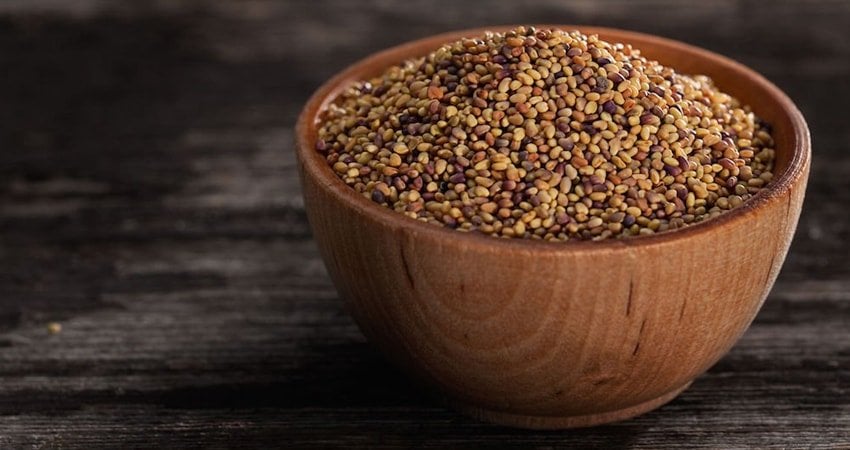
3. Clover – A powerful antioxidant. Clover sprouts are literally packed with antioxidants, which means that by eating them, you can slow down the process of aging and protect your body from the overall detrimental effect of free radicals. Relief for many women’s health conditions. Due to the abundance of phytoestrogens, clover seeds can relieve the symptoms of PMS, hot flushes, fibrocystic disease, and even menopause. Eating Sprouts: Wonderful Benefits for Your Hair, Skin, and Overall Health Eating Sprouts: Wonderful Benefits for Your Hair, Skin, and Overall Health An effective detoxifier. Some of the chemicals contained in clover sprouts act as efficient blood purifiers. Therefore, they are a great addition to any detox problem. This also makes these seeds a good choice for people with certain circulatory system disorders. An effective tool in cancer fighting and prevention. Phytochemicals contained in clover seeds and sprouts have been proven efficient fighters against cancer as they prevent new blood vessels forming within the tumor. This helps slow down cancer growth. Isoflavones reduce the risk of some types of cancer, especially breast and prostate cancer. This chemical affects prostate cancer because it interferes with the production of enzymes that contribute to the growth of this particular type of tumor.
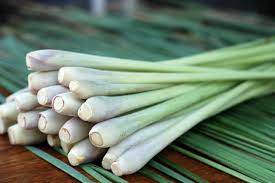
4. Lemongrass – can help fight against free radicals, thus reducing the incidence of inflammation in the body. Lemongrass contains the inflammation-fighting compounds chlorogenic acid, isoorientin, and swertiajaponin. Inflammation is a factor in many adverse health conditions, including pain and heart disease. According to the Memorial Sloan Kettering Cancer Center, smelling lemongrass may help people with anxiety. Lemongrass is also known for lowering cholesterol.
According to the Memorial Sloan Kettering Cancer Center, study results suggest that lemongrass may have some infection-preventing capabilities. For example, the herb seems to reduce the incidence of thrush, a fungal infection that commonly affects people with weakened immune systems, such as those with HIV. In many countries where the lemongrass plant is native to the area, people will take the lemongrass stalks and chew on them as a way to improve dental health and keep the mouth feeling clean. According to one study Trusted Source, lemongrass may be able to block pain. This means that drinking lemongrass tea could potentially help to prevent a person from sensing pain. The results of a 2015 study suggest that drinking lemongrass tea infusions daily for 30 days can increase hemoglobin concentration, packed cell volume, and red blood cell count in the body. Drinking lemongrass tea can have diuretic effects, which means that it stimulates the kidneys to release more urine than usual. This diuretic effect on the body can be beneficial in cases where water retention leads to bloating. This is a common symptom of premenstrual syndrome (PMS).
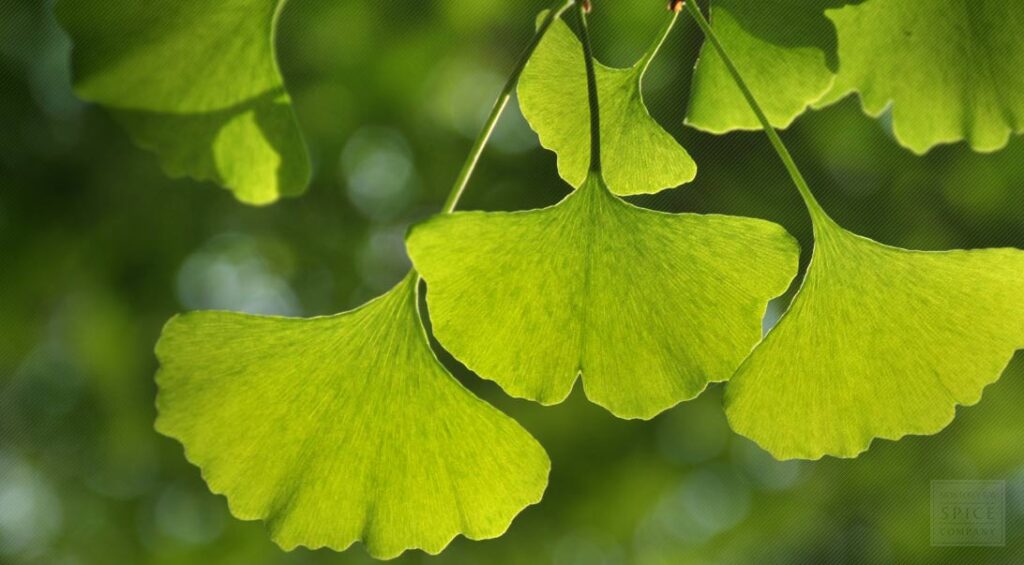
5. Ginkgo, one of the oldest living tree species in the world, has a long history in traditional Chinese medicine. Members of the royal court were given ginkgo nuts for senility. Other historical uses for ginkgo were for asthma, bronchitis, and kidney and bladder disorders.
Today, the extract from ginkgo leaves is promoted as a dietary supplement for many conditions, including anxiety, allergies, dementia, eye problems, peripheral artery disease (when buildup of plaque narrows the blood vessels that carry blood to the head, organs, and limbs), tinnitus, and other health problems. Also used to treat Alzheimer’s.
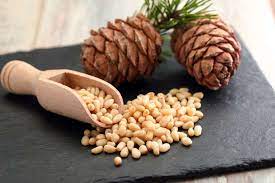
6. Pine nuts are one of the calorie-rich edible nuts. 100 g of dry kernels provide 673 calories. Additionally, they comprise numerous health-promoting phytochemicals, vitamins, antioxidants, and minerals.
Their high caloric content chiefly comes from fats. Indeed, the nuts are especially rich in monounsaturated fatty acids like oleic acid (18:1 undifferentiated fat) that helps to lower LDL or “bad cholesterol” and increases HDL or “good cholesterol” in the blood. Research studies suggest that the Mediterranean diet which contains useful amounts of monounsaturated fatty acids, vitamins, and antioxidants, helps to prevent coronary artery disease and strokes by favoring a healthy blood lipid profile.
Pine or cedar nuts contain essential fatty acid (the omega-6 fat), pinolenic acid. Recent research has shown its potential use in weight loss by curbing appetite. Pinolenic acid triggers the release of hunger-suppressant enzymes cholecystokinin and Glucagon-like peptide-1 (GLP-1) in the gut. Also, pinolenic acid has thought to have LDL-lowering properties by enhancing hepatic LDL uptake.
Likewise in almonds, pines too are an excellent source of vitamin-E; composing about 9.33 mg per 100 g (about 62% of RDA). Vitamin-E is a powerful lipid-soluble antioxidant, required for maintaining the integrity of the cell membrane of mucosa and skin by protecting it from harmful free oxygen radicals.
Furthermore, pines are one of the gluten-free tree nuts, and therefore, are a popular ingredient in the preparation of gluten-free food formulas. Such formula preparations can be a healthy alternative in people with wheat food allergy and celiac disease.
Pine nuts are an excellent source of the B-complex group of vitamins such as thiamin, riboflavin, niacin, pantothenic acid, vitamin B-6 (pyridoxine), and folates. These vitamins work as co-factors for enzymes in cellular substrate metabolism inside the human body.
Furthermore, pine nuts contain healthy amounts of essential minerals like manganese, potassium, calcium, iron, magnesium, zinc, and selenium. At 8.802 mg per 100 g (about 383% of daily recommended intake), pines are one of the richest sources of manganese. Manganese is an all-important co-factor for the antioxidant enzyme, superoxide dismutase. Therefore, consumption of pine kernels helps the human body develop resistance against infectious agents and scavenge harmful oxygen-free radicals.
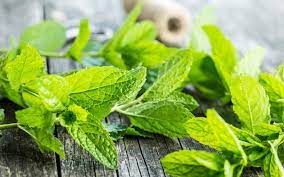
7. Mint is a calming herb that people have used for thousands of years to help soothe an upset stomach or indigestion.
A 2019 reviewTrusted Source found that placebo-controlled studies support the use of peppermint oil as a remedy for a range of gastrointestinal conditions, including indigestion, IBS, stomach pain in children, and feelings of sickness after surgery.
The authors of the review found that mint works against harmful microbes, regulates muscle relaxation, and helps control inflammation.
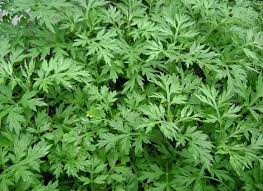
8. Wormwood has long been sought for its pain-relieving and anti-inflammatory properties (4Trusted Source, 9, 10Trusted Source). For example, this herb may help relieve osteoarthritis, a painful condition resulting from joint inflammation.
Wormwood has been used to treat intestinal worms as far back as Ancient Egypt. This parasite-fighting property is attributed to thujone. Besides thujone, another notable wormwood compound is chamazulene. It acts as an antioxidant and is most concentrated in the essential oils of the plant’s pre-flowering stage.
Antioxidants like chamazulene may combat oxidative stress in your body, which is associated with cancer, heart disease, Alzheimer’s, and other ailments. Artemisinin, another plant compound found in wormwood, may help fight inflammation in your body. Prolonged inflammation is associated with several chronic diseases.
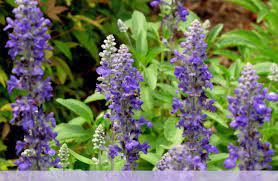
9. Hyssop is used for digestive and intestinal problems including liver and gallbladder conditions, intestinal pain, intestinal gas, colic, and loss of appetite. It is also used for respiratory problems including coughs, the common cold, respiratory infections, sore throat, and asthma.
Other uses include urinary tract infection (UTI), poor circulation, HIV/AIDS, and menstrual cramps. Some people use hyssop as a gargle; in baths to cause sweating; and on the skin for treating skin irritations, burns, bruises, and frostbite.
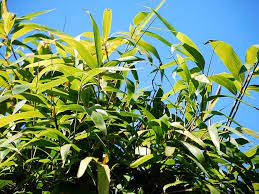
10. Bamboo Leaf tea is one of the trendiest teas on the block. This is because of its immense health benefits. One of the biggest benefit is it promotes hair growth. If you are losing hair, have a cup of bamboo tea daily and watch the amazing results.
Bamboo contains about 70% silica, which is the highest in any plant. It is this silica that benefits skin, nails, and hair tremendously by encouraging the production of collagen, one of the essential proteins needed for maintaining the youthfulness of skin and tissues.
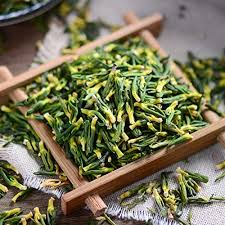
11. According to Dr. Subhuti Dharmananda from the Institute for Traditional Medicine, Lotus seeds are a good source of protein, magnesium, potassium, and phosphorus. They are also a good source of iron and zinc among trace elements included within the seeds. Lotus seeds are also low in saturated fat, sodium, and cholesterol.
All lotus seeds contain the anti-aging enzyme L-isoaspartyl methyltransferase, which is believed to help repair damaged proteins, according to the Kushi Institute, a macrobiotic website. Because of this, many cosmetic companies are now finding ways to include the seeds in anti-aging blends. According to Water Gardeners International website, lotus seeds contain kaempferol, a natural flavonoid which prevents inflammation, which also helps repair aging gum tissue.
Lotus seeds have astringent properties that have specific benefits to the kidneys, helping to restore vital energy within the body. According to “Shen Nong Bai Cao Jing”, an ancient Chinese Herbal Book written thousands of years ago, the sweet and neutral taste of lotus seeds will help nourish the spleen and alleviate diarrhea and its calming properties have long been used to treat insomnia or restlessness. The lotus embryo, or heart of the lotus seed, benefits the heart because of its bitter and cooling properties. The bitter components are said to include the isoquinoline alkaloids, which have antispasmodic and calming effects that can help dilate blood vessels, thus reducing blood pressure.
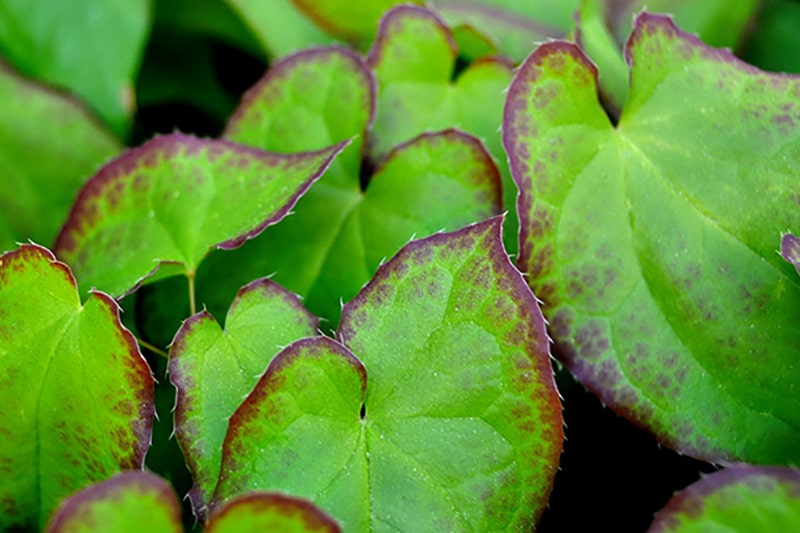
12. Horny goat weed has played a vital, multifaceted role in traditional Asian medicine for at least 1,000 years. It is considered a yang tonic, particularly for the “energetic organ” known as the kidney (which corresponds to some extent to the Western concept of the kidney). Enhancing kidney energy in this setting correlates to improving sexual function and fertility.1 Animal studies conducted in China have investigated the use of this herb within the traditional conception of a yang tonic and found effective for that purpose.2 It is also considered helpful for combating what is known as wind-damp-cold blocking circulation of the body’s dynamic life energy, or qi, which in Western terms is similar to hardening of the arteries and related complications. It is particularly used to help people recover from strokes.
In most cases, herbs in traditional Asian medicine are not used singly, but rather as a component of multiherb formulations. One animal study in China found that a combination of horny goat weed and three other herbs was effective at reducing osteoporosis resulting from the use of cortisone-like drugs, but none of the four herbs used alone was effective.3 This finding supports the traditional notion that horny goat weed may be particularly beneficial when used in combination with other herbs.
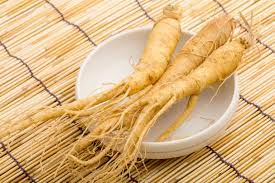
13. Although American ginseng has been studied more for diabetes, both types of Panax ginsengs may lower blood sugar levels in people with type 2 diabetes. However, in a few studies it looked like Asian or Korean ginseng raised blood sugar levels. Some people think that the ginsenosides in American ginseng might lower blood sugar while different ginsenosides in Asian ginseng could raise blood sugar levels. Until researchers know more, you should not take ginseng if you have diabetes without your doctor’s supervision and monitoring.
People who take ginseng often say they feel more alert. Several studies report that Asian ginseng may slightly improve thinking or learning. Early research shows that Asian ginseng may improve performance on such things as mental arithmetic, concentration, memory, and other measures. Some studies have also found a positive effect with the combination of Asian ginseng and Ginkgo biloba.
There have been a number of studies using Asian ginseng for athletic performance in people and laboratory animals. Results have been mixed, with some studies showing better strength and endurance, others showing improved agility or reaction time, and others showing no effect at all. Even so, athletes often take Asian ginseng to boost both endurance and strength. Asian ginseng was also found to reduce fatigue in a study of 332 people.
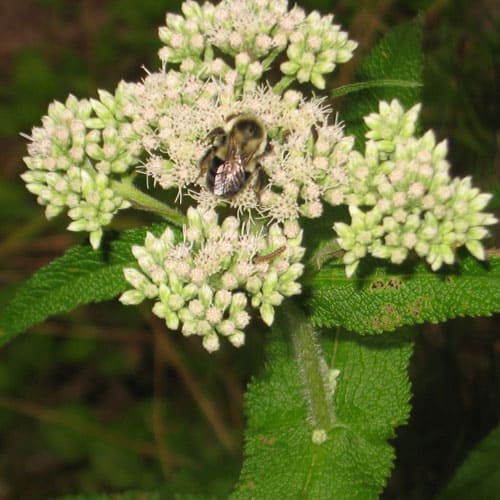
14. According to Mark Pedersen, a research chemist who specializes in herbal chemistry, Boneset is one of the most versatile plants on Earth. He believes that no one phytochemical is responsible for the action of Boneset, rather it is the symbiosis of all of the plants constituents that produce its remarkable effects. His research shows that in virtually every instance where there is inflammation or infection, Boneset has proven itself most effective.
Immune Boosting
Boneset has been shown to contain antiviral properties and strengthens the immune system by enhancing the secretion of interferon. Interferon belongs to the large class of proteins known as cytokines – molecules used for communication between cells to trigger the protective defences of the immune system that help eradicate pathogens. Interferons are named for their ability to “interfere” with viral replication by protecting cells from virus infections. Other studies have found Boneset effective against minor viral and bacterial infections by stimulating the white blood cells.
Studies indicate that Boneset’s immunostimulating properties are due to the presence of sesquiterpene lactones and polysaccharides in the plant.
Fever Reducer
Whilst a high temperature or fever is a natural healing process in the body, over a certain temperature it can become dangerous and even life threatening. A powerful diaphoretic, the most famous use of Boneset is as a fever reducer. Best taken in a hot infusion, Boneset promotes a therapeutic sweat in fevers. It contains flavonoids and essential oils that stimulate the peripheral circulation and by encouraging sweating, it forces the body to not only cool down but to also release several harmful toxins through the skin.
Colds/Flu
The immunostimulating and fever reducing properties of Boneset make this herb perfect to alleviate the symptoms of colds and flu. Boneset is also an excellent expectorant, able to loosen phlegm and reduce inflammation in the respiratory tract.
Digestive Health
Research shows that the sequiterpene lactones found in Boneset stimulate deficient digestive enzymes in the gastrointestinal tract and stimulate bile flow in the liver. It also has a mild laxative effect, allowing waste to move through the body more easily. In larger doses it can expel parasites; however it is recommended to consult a herbalist before using this herb in large doses.
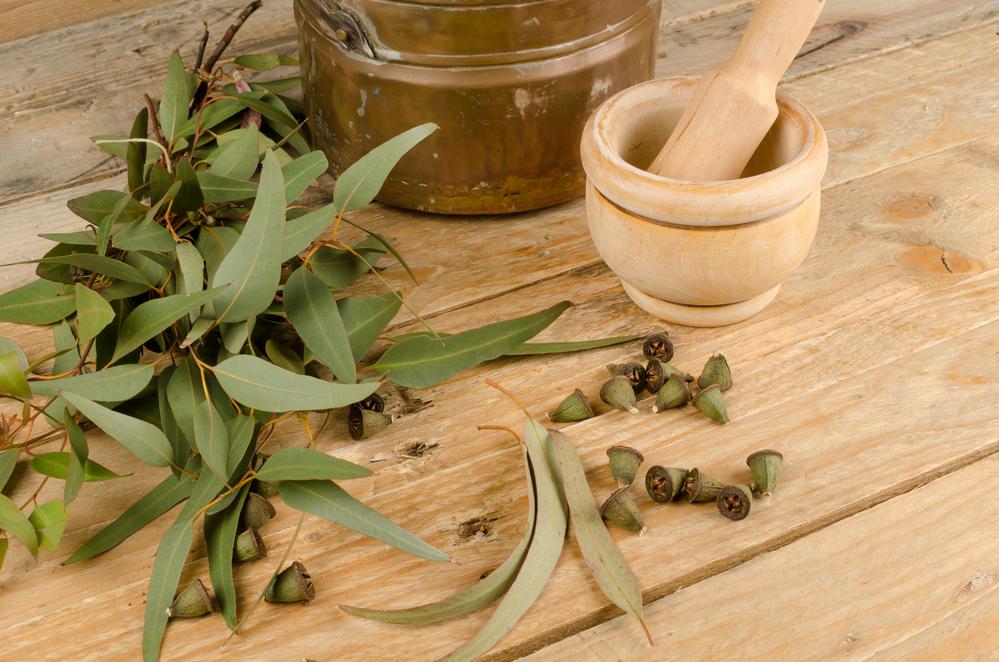
15. They concluded that a positive interaction between E. camaldulensis essential oil (a tree in the Eucalyptus family) and existing antibiotics could lead to the development of new treatment strategies for certain infections. A studyTrusted Source published in Clinical Microbiology & Infection suggests that eucalyptus oil may have antibacterial effects on pathogenic bacteria in the upper respiratory tract, including Haemophilus influenzae, a bacteria responsible for a range of infectionsTrusted Source, and some strains of streptococcus.
Herbal remedies recommend using fresh leaves in a gargle to relieve a sore throat, sinusitis, and bronchitis. Also, eucalyptus oil vapor appears to act as a decongestant when inhaled. It is a popular home remedy for colds and bronchitis.
The antibacterial and antimicrobial potential of eucalyptus has been harnessed for use in some mouthwash and dental preparations. In promoting dental health, eucalyptus appears to be active in fighting bacteria that cause tooth decay and periodontitis. The use of eucalyptus extract in chewing gum may promote periodontal health, according to a studyTrusted Source published in the Journal of Periodontology.
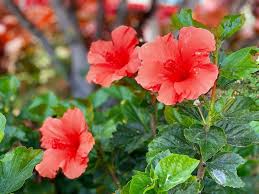
16. Sipping on hibiscus tea can work wonders when it comes to cutting down on your cholesterol levels. Yes, this unique little flower that is turned into hibiscus extract has been carefully studied to see if it had a positive impact on high blood pressure and cholesterol.
Loaded with antioxidants, turning to the ritual of hibiscus tea can help give your body the ammo it needs to fight off free radicals and reduce oxidative stress and damage. Free radicals can wreak havoc on our overall health and wellbeing and upset your cells. Not only do free radicals massively contribute to speeding up the aging process (especially when it comes to the skin), but they are also linked with health conditions and a whole range of diseases including cancer, dementia, diabetes, and heart disease, among others. In a comparison on tea and antioxidant content, hibiscus tea hit the number one spot thanks to its soaring levels, even smashing the popular green tea off the top charts.
A study showed that just drinking three cups of tea in adults at risk of hypertension was enough to see a drop in their systolic blood pressure in comparison to those given a placebo. Full of anti-inflammatory properties, hibiscus tea is great for your heart health and can help to keep your blood pressure on the right side.
While bodyweight is a complex issue and dealing with unhealthy obesity requires a proper schedule of exercise and lifestyle changes, hibiscus tea is considered to be a contender in helping with body fat. More studies are needed but from the info collected, it shows that sipping hibiscus tea for 3 months helped people to lower their body weight and cut down on abdominal fat. Not bad for something so delicious.
Snuggle up with a cup of hibiscus tea and let all that vitamin C give your immune system a much-needed boost. Vitamin C is one of the major players for fending off colds and flu that come with the seasonal change. This vibrant red tea can keep you in tip-top shape thanks to its abundance of vitamins and minerals, the Vit C can also help your body to fend off all kinds of infections.
Whether you have been partying a little hard or just want to keep your liver in the best health possible, sipping hibiscus tea can be just the ticket. This pomegranate-colored beverage has been studied for helping to prevent liver damage as it can help increase the concentration of detoxifying enzymes. While these studies were conducted using hibiscus extract and more human studies are needed, it stands to reason that hibiscus tea can be a useful tool in the fight against future liver problems.
Rich in polyphenols, hibiscus tea could serve as another sword in the fight against cancer. Polyphenols are compounds that are loaded with anti-cancer properties. In the test tube studies done, hibiscus extract was seen to reduce cell growth and help stop plasma cell and mouth cancer. Other studies also showed the tropical plant leaf from preventing prostate cancer growth from spreading, and inhibited stomach cancer cells up to 52%.
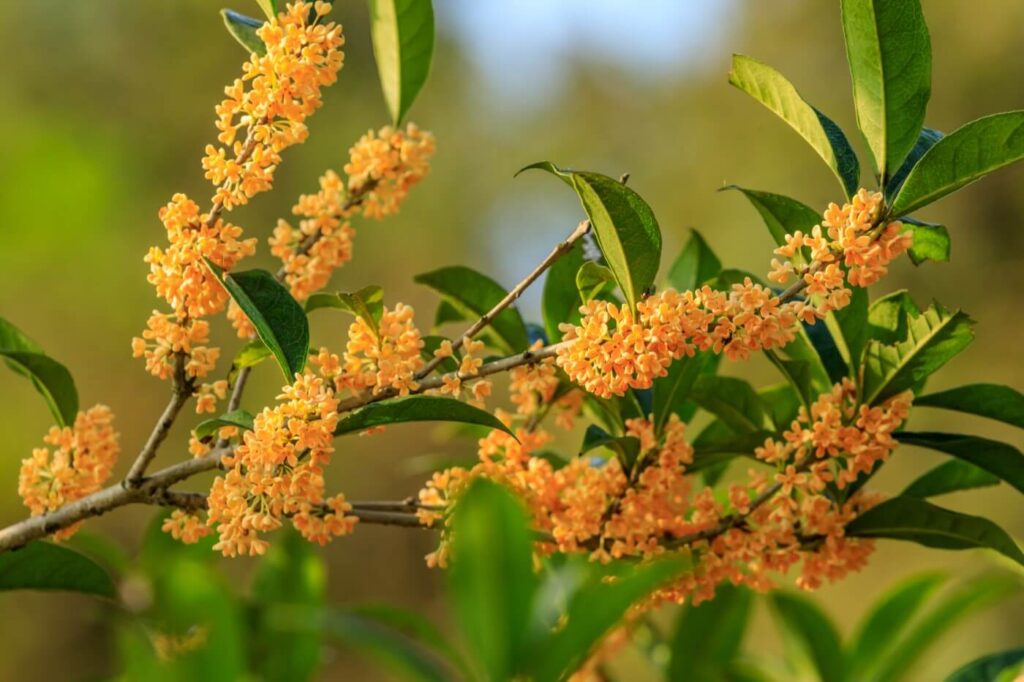
17. Osmanthus tea is known to enhance skin tone and replenish the skin’s colour and glow. Beauty products that are currently in the market contain Osmanthus oils. In addition to improving your skin, regularly consuming Osmanthus tea also improves eyesight.
Weight loss-Drinking Osmanthus tea doesn’t necessarily help you burn calories or fat, but it does suppress your appetite, which will help you curb binge eating and help in losing weight. According to a recent study by Scientific Reports, the aroma of Osmanthus tea will decrease any appetite-suppressing brain chemicals, which will prevent you from over-eating and binge eating.
Osmanthus tea is a natural detox and aids in ridding your body of toxins, especially in your kidney and liver. Regular consumption of Osmanthus tea makes you feel energized and refreshed and is often used in Chinese medicine as a cleansing agent. The tea is also known to treat health issues in relation to the endocrine system, liver and kidney. Traditional Chinese medicines also use osmanthus tea to purify the blood.
Vital nutrients- Osmanthus tea is said to relieve the body from fatigue and prevents drowsiness. The tea contains cobalt, manganese, selenium, molybdenum, neo-beta-carotene B, trans-alpha-carotene aids in preventing premature deaths and trans-beta-carotene. Neo beta carotene and trans alpha carotene are essentially converted into vitamin A and is an antioxidant.
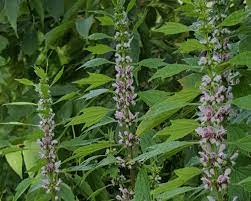
18. Motherwort (Leonurus cardiaca) is said to benefit the heart and the menstrual cycle. Some of its uses include reducing the risk of heart disease, treating heart palpitations, reducing anxiety, and treating high blood pressure.1
Motherwort is also believed to help ease symptoms of menopause.
Motherwort is an herb in the mint family. It is native to central Eurasia but has spread to North America, both as a garden plant and as an invasive weed. In herbal medicine, its leaves and flowers are used. Motherwort is also available in dietary supplement form.
In addition to being a source of antioxidants and anti-inflammatory compounds, motherwort contains leonurine, a compound found to promote the relaxation of blood vessel walls in preliminary studies. Interestingly, it’s this same substance that’s been shown to encourage uterine contractions, lending support to its traditional use in childbirth and as a promoter of menstruation.
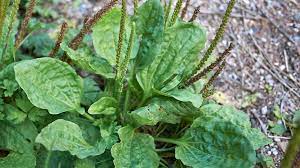
19. Plantain leaf is unique among herbs because of its ability to draw out toxins from your skin and body. It was once used to draw out venom from snake bites and other animal and insect bites. Its drawing action can also be highly effective on stings, whether from an insect or a plant like stinging nettle.
You can even use a plantain poultice to draw out a deep splinter. Gladstar recommends soaking the area of skin in hot plantain tea, then keeping a poultice on until the sliver can be pulled out. (Gladstar, pg. 189)
When taken internally, plantain leaf has similar benefits by drawing toxicity out of your body. It’s considered a blood purifier and stimulates your liver to cleanse toxins out of your blood and body.
Another traditional use for plantain leaf was to ease coughs and other types of respiratory problems. The leaves contain a good amount of mucilage, which helps to soothe, moisten, and protect the throat and respiratory system.
One of the greatest benefits of plantain leaf is its ability to help damaged or infected skin heal.
Earning the nickname “Healing Blade,” plantain was once used in Scotland to stop blood flow and heal tissues from sword wounds. It was also valued by the Native Americans for treating stings, burns, rashes, and wounds. Modern herbalist Rosemary Gladstar calls plantain a “poultice herb supreme”. Its fresh leaves can be mashed and applied directly to insect bites and stings, burns, skin eruptions, and wounds. She also recommends using plantain alone or with an herb like yarrow on wounds that are still bleeding to slow or stop the flow. (Rosemary Gladstar. Medicinal Herbs: A Beginner’s Guide, pg. 189-190)
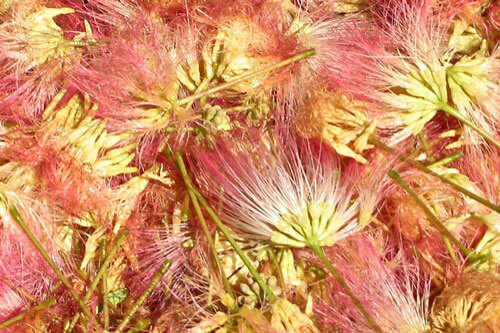
The unique combination of active components in albizia, which might include quercetin, isoquercetin, saponins, and polyphenols and it can have a rather strong impact on the hormonal and nervous systems in the human body. One of the oldest and most consistent uses of albizia is as a mild sedative that might alleviate feelings of stress and anxiety. For those suffering from chronic stress hormones in their body, albizia might help them find some peace and quiet in their own minds and finally relax.
In a similar vein to the health benefit above, albizia also improves mood by rebalancing hormones in the body and soothing the nervous system, which can often complicate hormonal levels. In fact, it has even been used by people feeling suicidal tendencies or experiencing irrational anger and thoughts. It has been known in ancient medicinal cultures as a spiritual herb that helps anchor your soul and find peace.
If you suffer from sleeplessness or insomnia, a decoction of albizia may be just the ticket to a good night’s sleep. Beyond soothing the nerves and mind, it may help calm the body and might help stimulate long-lasting restful sleep.
For those who suffer from asthma, allergies, or chronic respiratory conditions, albizia might significantly help by eliminating inflammation in those sinuses and tracts, thereby reducing the impulse to cough or wheeze. This can help to speed up recoveryh time and generally improve the health of your respiratory system, even in the midst of an asthmatic attack. In fact, it has been shown to possibly reduce the effects of allergic antibodies so your allergic reactions are not nearly as severe.
The possible anti-inflammatory activity of albizia is also used to eliminate the pain associated with gout, arthritis, and other inflammatory conditions. Applying a paste to affected joints and areas may relieve swelling, and the sedative nature of the compounds may also eliminate pain.
For every sickness and disease, there will always be a cure…no matter how difficult it may be to find. For if it were not, that would cause an imbalance in the Universe. These are only but of few plants that our Mother Earth produces for our health.
But Remember…Heal Thyself!
